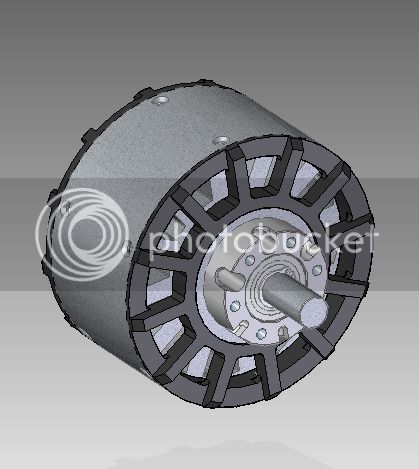Here's one folks haven't necessarily considered, (at least that I've read; I admit I haven't trolled the entire thread,) air gap between stator and rotor. The tighter the tolerances, (assuming all the machining is reasonably concentric to the shaft,) the less "insulating" air in the gap. Assuming it's practical, (uniform magnet thickness/mount height, rotor/stator are perfectly concentric to the shaft/bearings, could one decrease the gap to say, micrometer-level tolerances with precision potting molds or else machine the whole thing after casting? For that matter, could you simply use an iron stack that fits with similar tolerances in the magnet ring? Any disadvantages to doing this other than "get it wrong and wear down your magnets"? I'd assume you would also have to take into account material flex under load and bearing "give" when going over bumps, etc... in use. Any idea what's a reasonable gap width to shoot for?


